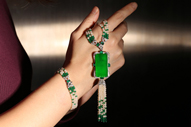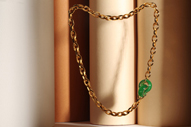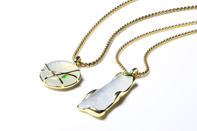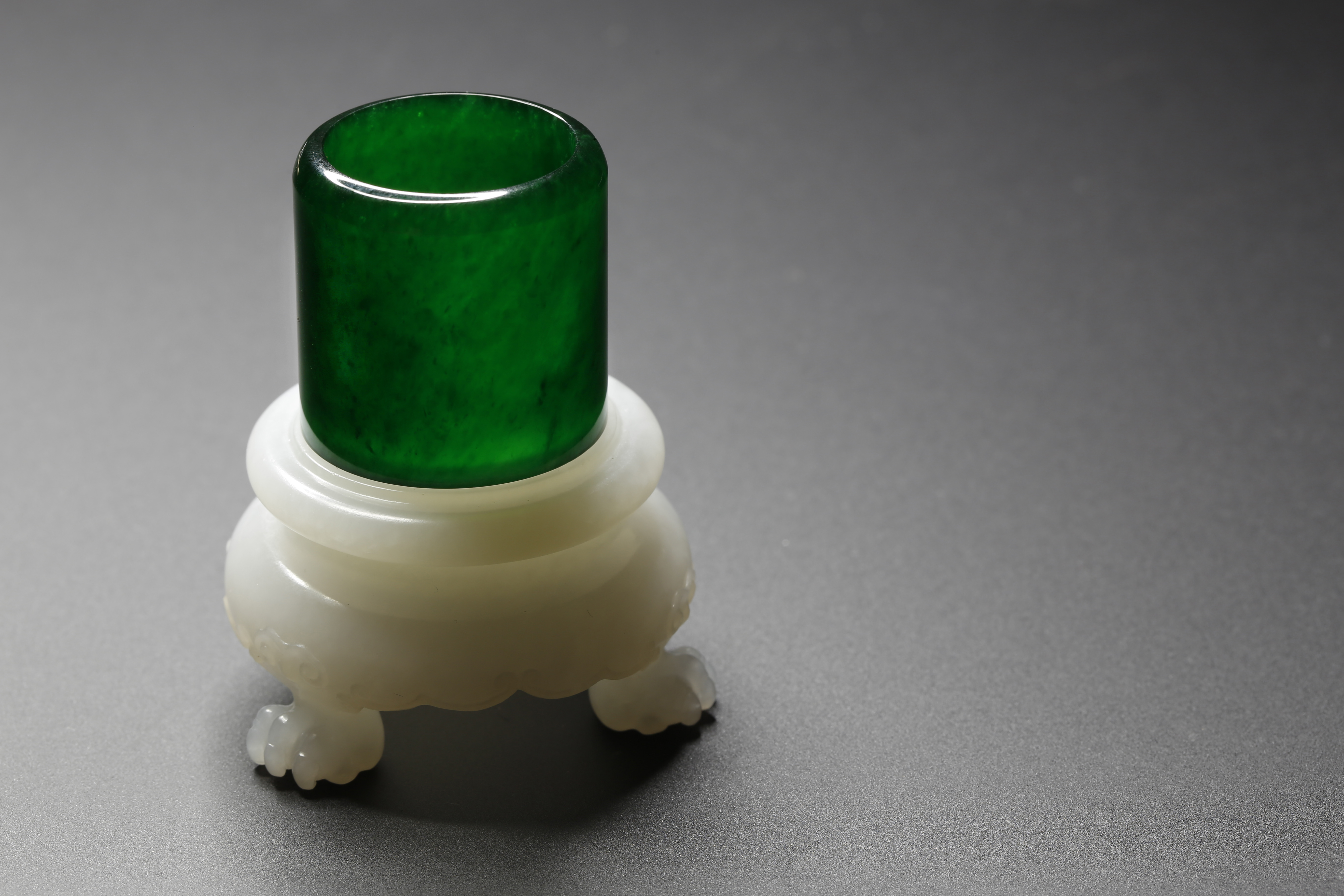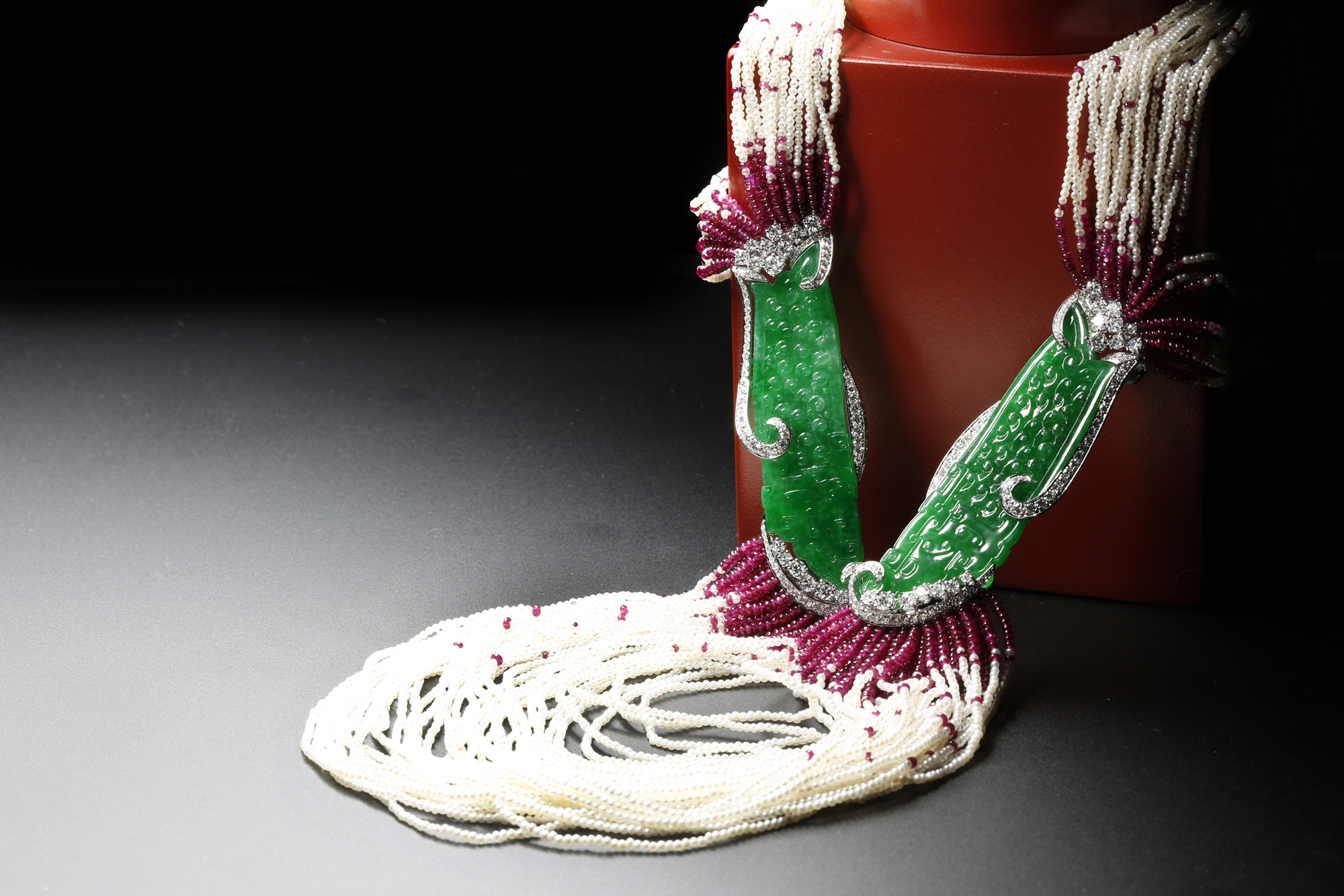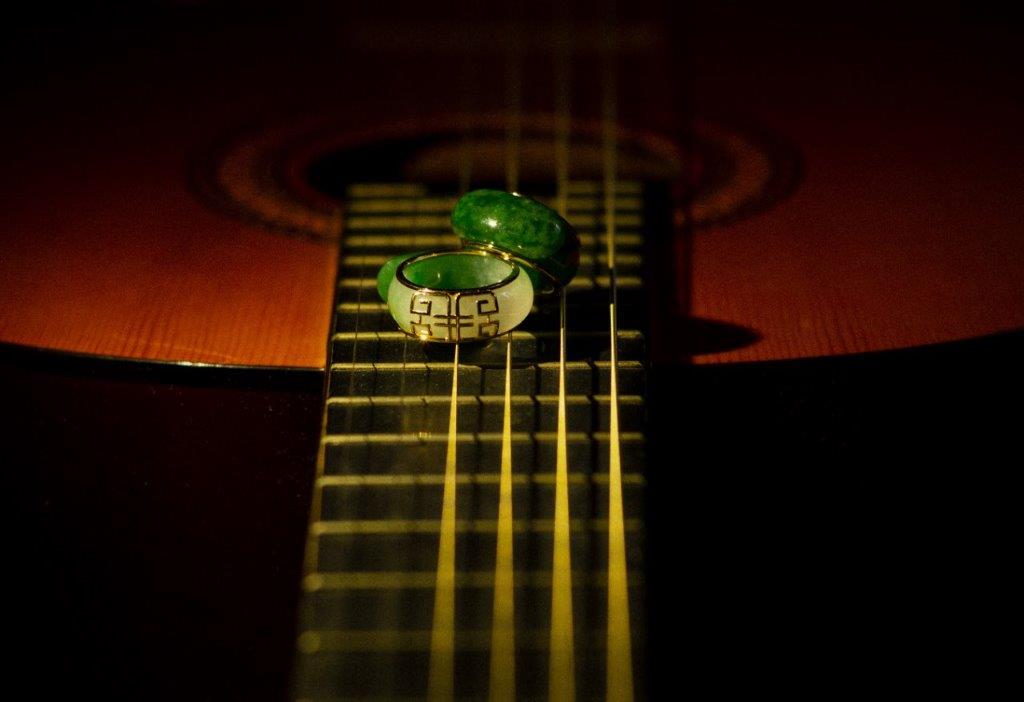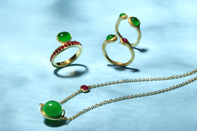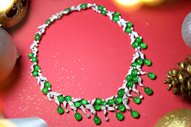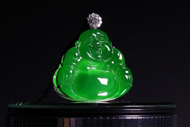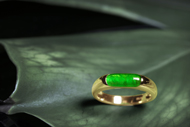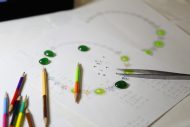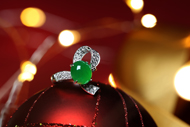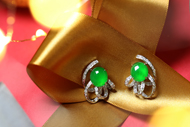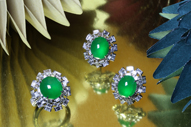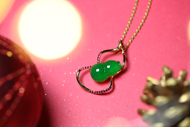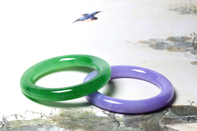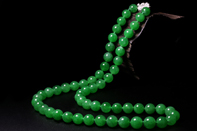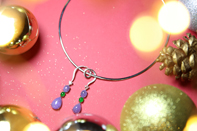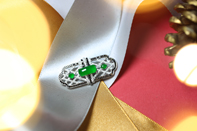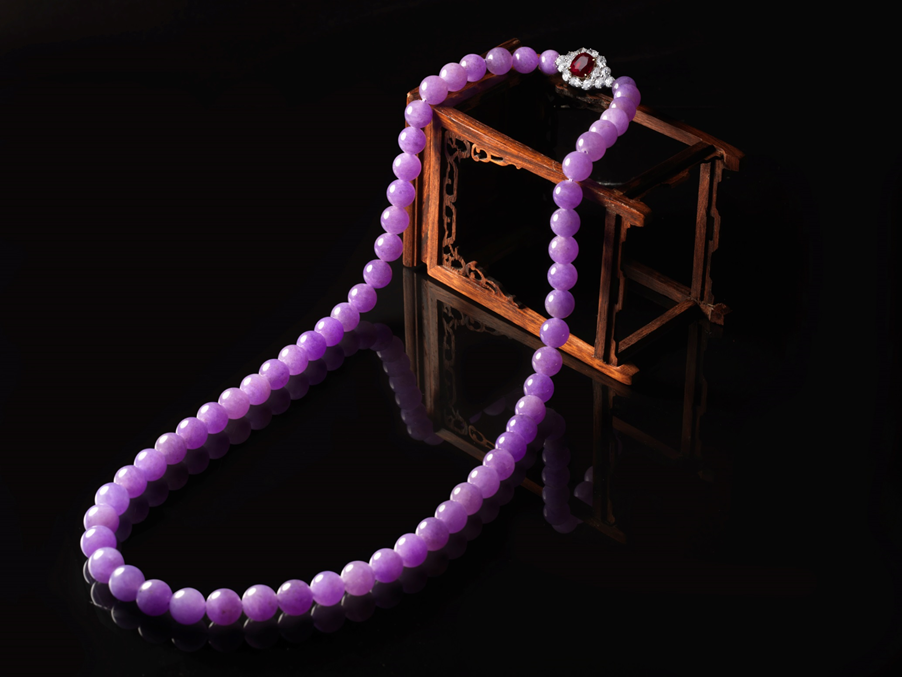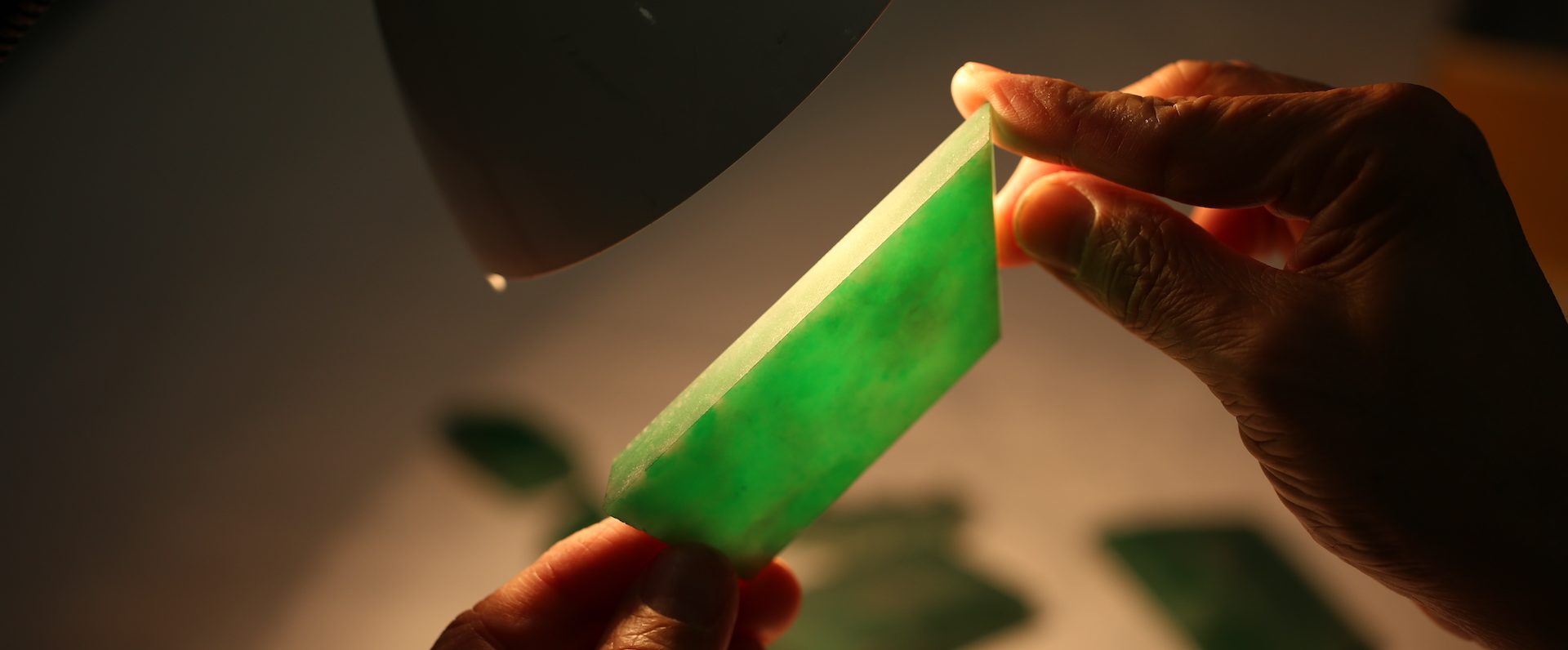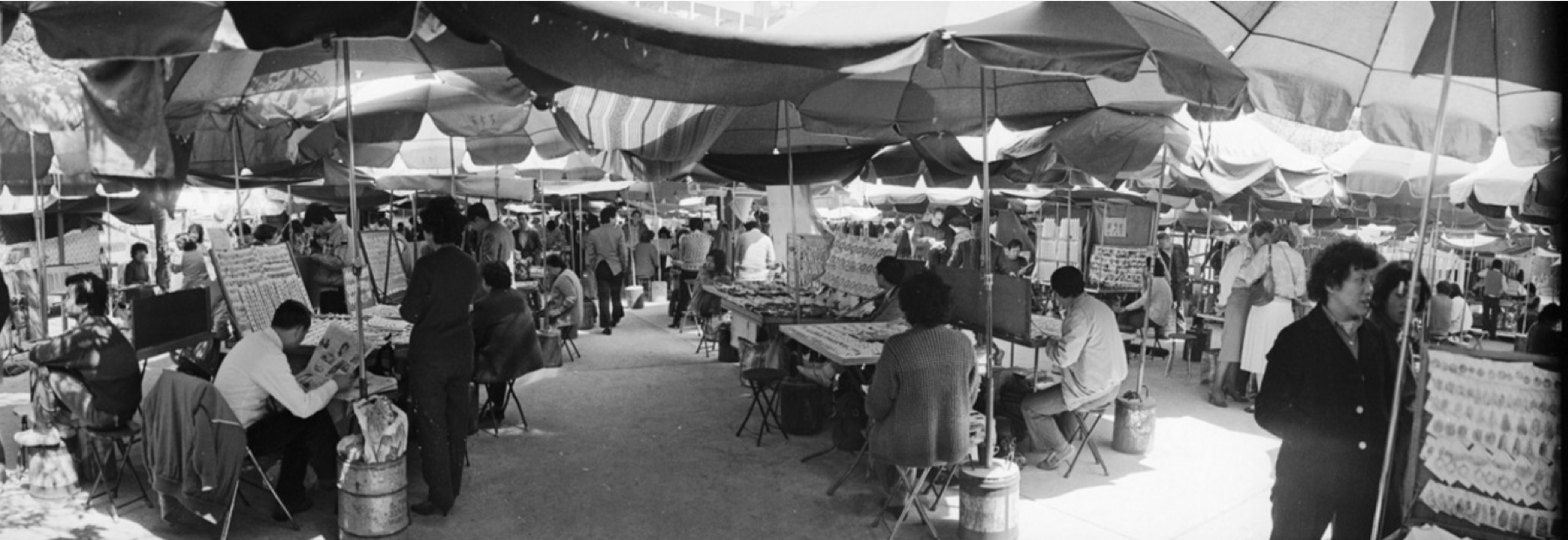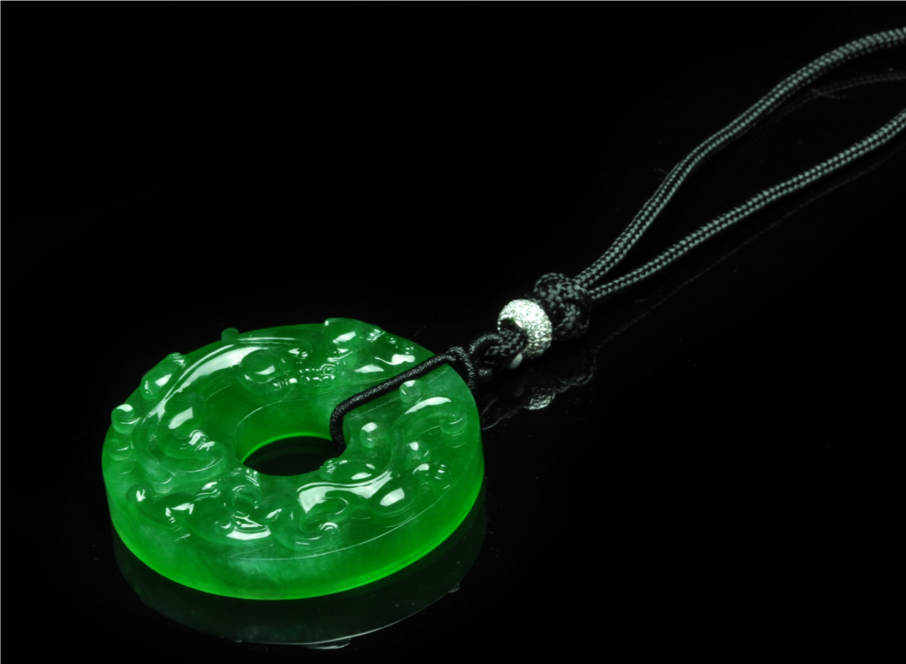The design process of fine jadeite jewellery is very different from that of other fine jewelleries. Although jadeite’s hardness is not as high as a diamond’s, it is still the second hardest gemstone of 6.5 to 7 on the MOHS hardness scale. Therefore, carving and sculpting fine jadeite is an extremely difficult task to carry out.
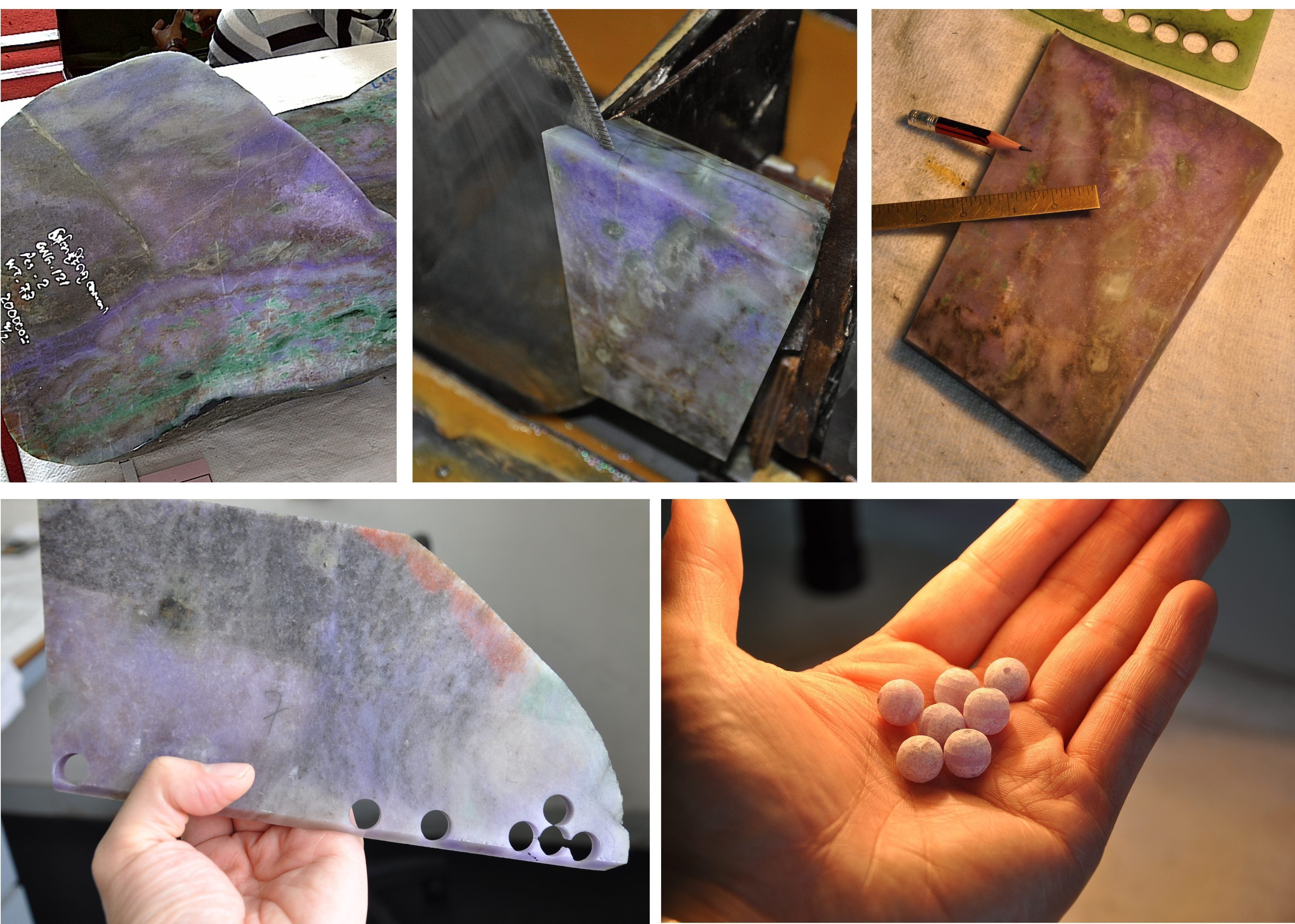
Aside from the density of the jadeite rough stone being different from normal stones, its appearance on the outside is not much different from ordinary boulders. There is no certain technique to tell the quality from the outside of a jadeite rough stone such as the colour, inclusion, texture and transparency etc. Even after polishing and cutting, there can still be many unexpected factors that could affect the final look and appearance of the finished product. Therefore, both the jadeite merchant and the skilled cutter must carefully study how to properly cut a portion from the original stone and turn it into a piece of jewellery. The “slicing” of the rough stone is critical to the production process. For example, a rough stone can be made into a bangle or a beads necklace, but both have the different size requirements. During the slicing process, they must rely on their experience, intuition and luck. Say if they accidentally make a wrong decision by slicing the rough stone into the dimension of a bangle and more flaws (such as cracks and coarse grain) are found after it is cut, that would limit the quality and price of the bangle. This uncertainty often happens during the polishing and cutting of the stone and any damage to the stone due to misjudgement can lead to significant loss.
From slicing to determining, and carving the final shape of the finished product, every step must be carefully carried out while the shape and structure are being refined. In terms of detailing, little fine aspects of the jewellery need to be continuously improved based on the stone’s colour distribution, uniformity, and the locations of the inclusions. In order to make a nicely polished and carved jadeite with the least flaws, there must be huge loss and wastage of the material, which is why high-quality jadeite jewellery is so precious and rare. Not only that, but each piece of jadeite is unique. Each piece is a combination of natural treasure and human wisdom. Nature determines the jadeite’s natural colour, particle size, texture and translucency and we cannot change those factors. The artisan must base on people’s aesthetic preferences, along with his experience and techniques in order to create the most beautiful piece of jadeite as it can be. This process requires immense time, effort and dedication from a skilled artisan to complete and even a slight carelessness may destroy the final product.
Unlike other gemstones, jadeite have unlimited possibilities and can be transformed into many different shapes of ornaments or carvings without needing any metal, whereas diamonds for example will need to be mounted on metal (gold or platinum). Jadeite also comes in cabochon, rectangular plagues, hoops, droplet or whatever shape to become the final product. There are certain fundamentals that we must strictly follow when making jadeite jewellery. For many other gemstones, designers would usually conceive the design first, then find the right material afterwards. However, this theory cannot be applied to jadeite jewellery design. Once you use jadeite as the material, it gets more complicated. Because each piece of jadeite is unique in its own way, it is very difficult to find a stone with the same exact size as planned. Naturally, brilliantly coloured jadeite will be even more difficult to find, so you must have your materials on hand to begin with before you make the plan – the opposite of what the design theory says. For other types of jewellery, the process is simpler because gems for jewellery such as blue diamonds, pink diamonds, Burmese pigeon blood rubies, or other gems can be found regardless of their sizes, appearances or grade. Therefore, with other semi precious and precious stones, you can still plan your design before you actually have your materials in hands. On the contrary, jadeite cannot be designed prior to having the materials, the final product of jadeite must be obtained before you can design plans for the jewellery.
In addition to its indifferent appearance and concept designs from other gemstones, jadeite is also hard to be made into mosaics. Most people think that jadeite is more traditional and only for old people but that’s not true, because when designing jadeite, it should still be made as new and fashionable, which is a problem that designers are facing every day. In general, people will focus on sales performance so they often try to satisfy the masses instead of the minorities with the most publicly appreciated products. This is because they cannot afford to be too wild and unexpected, so designers can feel more restraints to their creativity when designing. Although the founder of ILIA is not an artist, his concepts are clear, his design team has very strict requirements and he hopes greatly to create contemporary works that represent this current era. He also makes attempts at bold, new jadeite designs, while also keeping in mind the customer’s acceptance of the jewellery. Overall speaking, his pieces and designs are unique because he especially tries to make designs that are, firstly, completely fresh, and secondly, never been seen before in the market; and thirdly, not copying from the previous designs. Therefore, designers must have a good stream of imagination and inspiration, but when they see their customers wearing their favourite jadeite jewellery made by them, their satisfaction is the soul driving force and motivation for the design team. Now, more and more young people are starting to accept jadeite’s natural yet undiscovered beauty and its deep cultural heritage.


